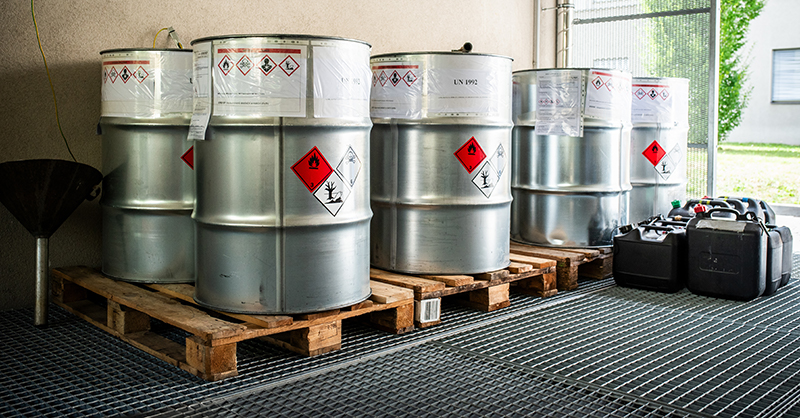Security Evacuation FAQs

Author: Nicky Dewhurst, Director, Business Operations/Response, Control Risks
A security evacuation is the urgent and coordinated effort to move individuals from a hazardous area to a place of safety due to imminent threats of severe injury or fatality. This process ensures the orderly and managed relocation of people from danger zones to secure locations.
In this article, our Fidelity / Crime team provides essential guidance on how to prepare for such emergencies, identifies scenarios that necessitate a security evacuation and addresses other common questions on the topic.
What measures can you take to prepare for a possible political/security evacuation?
Ensure that you have a functional evacuation plan specific to employees and assets. This should include the following.
- Designated evacuation leadership team
- Identified points of departure for air, sea and land evacuations
- Means of departure (Airplane, boat, vehicles)
- Triggers to decide at which point they should evacuate
- A means of monitoring the ongoing incident/situation, country analysis/reporting
- Options for “sheltering in place”
Why shouldn’t clients rely solely on the U.S. State Department for evacuation advice and response services?
The U.S. State Department’s role is to keep the U.S. citizen community informed of safety and security developments and travel options. The State Department is limited in its capacity of providing individual evacuation advice or assisting with the security of citizens if they choose to “shelter in place” or move to a departure point (airport, port, border crossing).
Who is Control Risks?
Great American’s Fidelity / Crime Division works with Control Risks, a global specialist risk consultant, to provide Insureds with 24-hour / 365-day access to Control Risks’ threat assessment and response capabilities.
Control Risks has offices in every world region and in every time zone. We will work with Control Risks to help Insureds navigate threats to harm Insureds and their businesses including kidnapping, extortion, child abduction and detention matters.
What are Control Risks’ levels of evacuation?
| Level | Description | Definition |
|---|---|---|
| Level 1 | No plan required | The likelihood of insecurity or natural disasters requiring evacuation is very low: full evacuation plans are not required. |
| Level 2 | Preparation | Insecurity may pose occasional threats to staff, but these are manageable and sudden deterioration is unlikely. However, organizations are advised to prepare evacuation plans because there is a risk of deterioration in security conditions, vulnerability to natural hazards and/or potential difficulties in extracting people from the country. |
| Level 3 | Caution | Security and operational threats are manageable but the potential for rapid deterioration means organizations should have full evacuation plans in readiness for immediate implementation. |
| Level 4 | Standby/Shelter-in-Place | Staff face risks from insecurity and on-the-ground conditions with a significant likelihood of escalation of spreading countrywide at short notice. Secure exit options are limited and subject to short-notice restrictions. Evacuation plans should be ready for immediate activation. |
| Level 5 | Non-essential evacuation | Security and operational conditions pose a serious threat to staff and their families that cannot be fully managed, and the situation is likely to persist or deteriorate. Movement is restricted, there are few secure options for leaving the country and these could be blocked at short notice. Non-essential staff and families could be evacuated. |
| Level 6 | Emergency evacuation | Risks to personnel are – or will very imminently become – extreme and largely unmanageable, and secure transport options are very limited; all staff should be evacuated. |
What factors does Control Risks use to determine if a political/security evacuation is necessary?
The below factors and triggers would necessitate a non-essential evacuation.
- Security: The government is under clear threat from a rapidly spreading insurgency; insecurity from riots, crime, kidnap and/or terrorism poses a significant threat, in particular to foreigners; there is an imminent risk of cross border invasion.
- Politics: the government is losing control and being challenged by popular unrest, armed groups or separatist forces; there are strong indicators that a coup is imminent; alternatively, the administration may be hostile to some or all foreigners.
- Natural disasters: a disaster has triggered shortages and interruptions to utilities, supplies, communications and transport (see table below). There is widespread damage to shelter in residential areas.
- Communication and supplies: shortages of essential supplies occur regularly; power and water are regularly disrupted; mobile, internet and landline communications are unreliable due to infrastructure damage or government shutdowns.
- Travel: curfews restrict movement at certain times. Travel to airports, ports or borders is hindered by insecurity or poor infrastructure; few options are available. Commercial airlines continue to operate but services are disrupted and or difficult to access. Land routes out are accessible but subject to security risks, weak infrastructure and/or strict entry requirements or insecurity in neighboring states.
The below factors and triggers would necessitate an emergency evacuation.
- Security: War or civil war affects large parts of the country; law and order have collapsed, with high levels of crime and instability making it unsafe to go out; mob violence, criminals, kidnap groups and/or terrorists target foreigners.
- Politics: The government has lost control and power is violently contested by armed groups or widescale popular mobilization. Alternatively, the administration – or an incoming regime – is actively hostile to some or all foreigners, who are at risk of unlawful detention or being prevented from leaving.
- Natural disasters: There is severe damage to infrastructure from a natural disaster. The availability of safe shelter is very limited; temporary shelters are in use.
- Communication and supplies: Essential supplies cannot be easily or safely acquired; utilities (power and water) are severely disrupted; satellite communications are essential.
- Travel: Lengthy curfews significantly curtail movement. Travel to airports, ports or borders is unsafe due to serious security risks or the poor state of infrastructure. Commercial airlines are no longer operating or are planning to imminently end services. Land exits are severely hindered by security risks; infrastructure weaknesses; and/or insecurity or strict entry requirements in neighboring states.
What does “shelter in place” mean and why, in some cases, would Control Risks recommend clients “shelter in place” versus evacuation?
“Shelter in place” means that individuals seek protection in their homes, places of employment, or other locations when a hazard or threat is imminent or occurring.
- Secure exit/evacuation options are limited and subject to short-notice restrictions.
- May be preferable over an evacuation when it is considered safer to remain than to evacuate due to risks from insecurity and on-the-ground conditions.
What are Control Risks’ capabilities during an ordered evacuation and how can Control Risks support clients that need to evacuate?
| Capabilities | |||
|---|---|---|---|
| Client Support Options | Example on-the-ground assistance scenarios | ||
Strategic advisory:
|
| ||
Your Partner in Crime®
Since 1995 we’ve been insuring clients from crime related losses. We have a depth of experience in both underwriting and claims that is unmatched in the marketplace. Discover how our specialization and expertise provide the advantage to address your unique needs.













